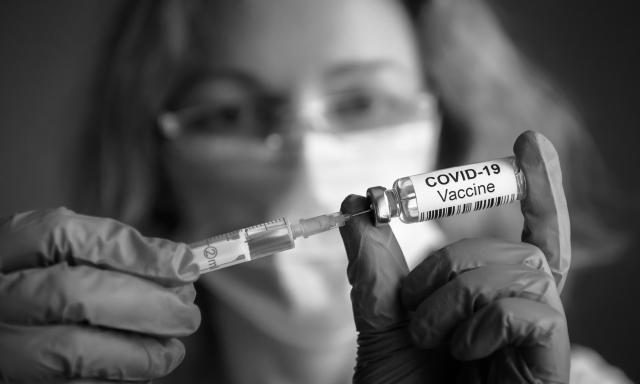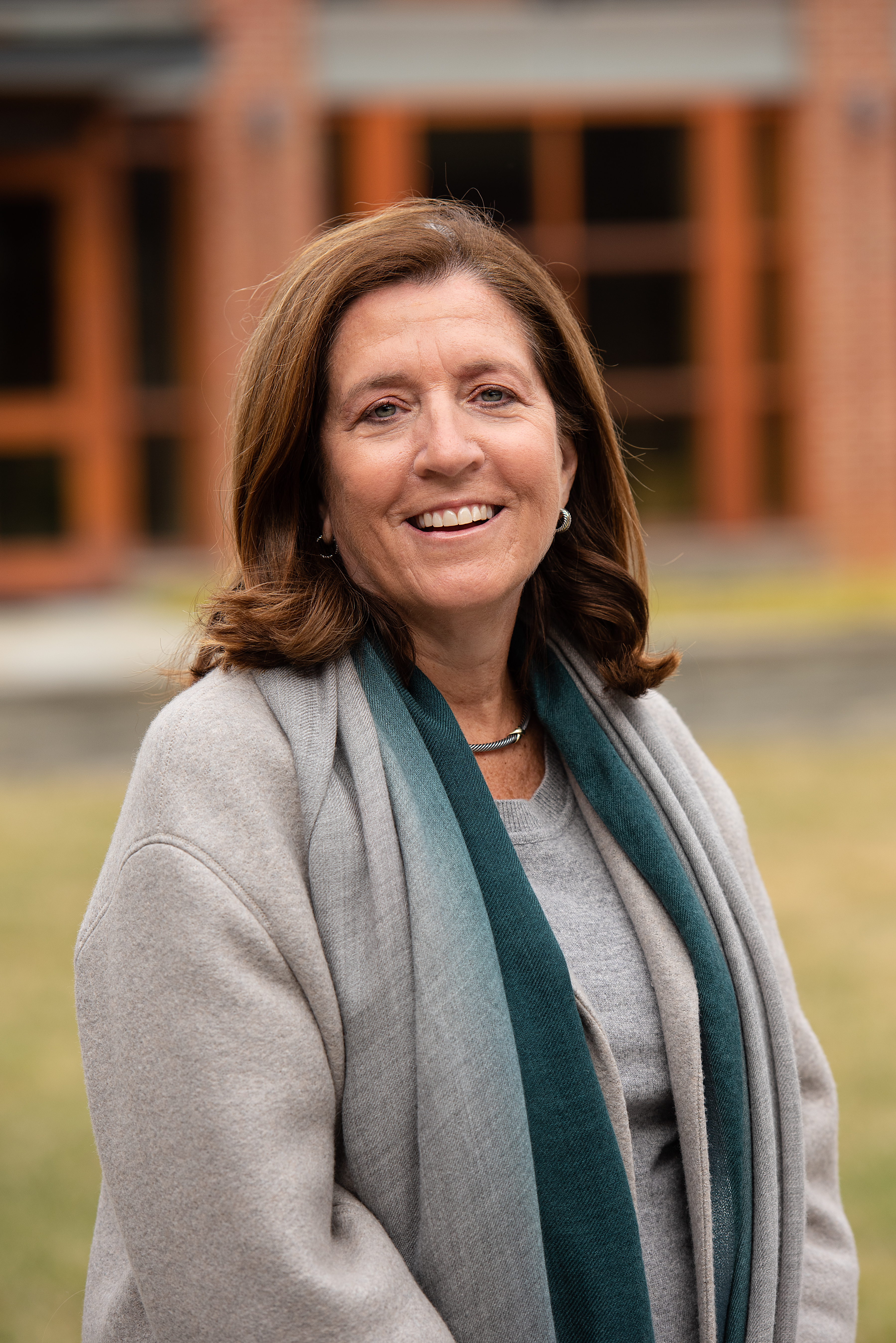

 Article
Article

 One of the most complicated mass mobilizations and product distribution launches the world has ever attempted, the COVID19 vaccine is the most effective tool to getting the world out of this pandemic. Professor Vivian Riefberg addresses 4 challenges of the vaccine rollout.
One of the most complicated mass mobilizations and product distribution launches the world has ever attempted, the COVID19 vaccine is the most effective tool to getting the world out of this pandemic. Professor Vivian Riefberg addresses 4 challenges of the vaccine rollout.

Insights from
Written by
Many people around the world have a common question on their mind: When can I get the COVID-19 vaccine?
The production and distribution of such a vaccine — the most promising tool (along with mask-wearing) for lifting the world out of the current pandemic – is a medical concern, of course, but it is also an operational challenge of epic proportions. Vivian Riefberg, a health care expert and professor of practice in the University of Virginia’s Darden School of Business, called it “one of the most complicated mass mobilizations and product distribution launches the world has ever attempted.” Riefberg is the David C. Walentas Jefferson Scholars Foundation Professor.
“We are introducing multiple novel vaccines to huge numbers of people, with different storage and administration regimens for different vaccines,” she said “And, we want to – we must – do it very quickly. We have never launched a set of products like this in this country or in the world.”
Riefberg, though not an M.D., is very well-acquainted with the operational challenges behind many health care efforts, as well as public sector leadership. Before joining Darden in August, she worked with consulting firm McKinsey & Company for 31 years, where she co-led their U.S. health care services practice, helping health care clients with the strategy, organization and operational issues behind all sorts of health care and public health problems. She also co-led the firm’s America public sector practice, where she worked extensively with public sector agencies on an array of operational and organizational issues.
Riefberg brought that expertise to Darden in the middle of the current pandemic, and this fall team-taught a course on COVID-19 and decision-making alongside UVA Physicians Group CEO Corey Feist, interim UVA Health Chief Medical Officer Dr. Paul Matherne and the World Bank’s Ayhan Kose.
We caught up with Riefberg last week to talk about some of the logistical challenges of distributing current COVID-19 vaccine options, as countries around the world are working to vaccinate their citizens and, in the U.S., a new presidential administration hopes to hit 100 million vaccinations in 100 days and perhaps more, as President Joe Biden said yesterday he wants to get to 1.5 million vaccinations daily, instead of just 1 million.
Here are four important challenges she identified – and her prediction for when we might get to “herd immunity.”
Though the first month of the U.S. vaccine rollout was marked by logistical stumbles and infrastructure gaps, Riefberg believes those will resolve fairly quickly. The bigger problem, she said, is vaccine supply.
“I think, in the next two months, we will likely have most of the infrastructure in place to distribute the vaccines, but demand will continue to substantially outstrip supply,” she said. “The key question is not just how we get to herd immunity, but how we get there quickly – in months instead of years.”

Riefberg said the use of the Defense Production Act could be helpful. The act, passed in 1950, allows the U.S. government to require private companies to prioritize production of items necessary to national security. The Trump administration used the act some with regard to vaccine production; the new Biden administration is expected to use it even more.
“I believe that will help with issues in the supply chain, and with shortages of materials needed to make and deliver the vaccines,” Riefberg said.
Another possible influx of vaccine supply could come from pharmaceutical companies that are hoping their vaccines can gain emergency use authorization from the U.S. Food and Drug Administration over the coming weeks and months. Chief among them are Johnson & Johnson and AstraZeneca, two companies that are nearing the end of late-stage clinical trials and hope to join Moderna and Pfizer, the two companies with vaccines available right now.
The Johnson & Johnson vaccine needs only a single dose, while the others require two doses several weeks apart. However, Johnson & Johnson has already acknowledged some manufacturing issues that could slow down their vaccine production.
“We need to be thinking about strategies for integrating all of these vaccines – some of which may have different levels of efficacy – and distributing them equitably, especially if there are real differences in the efficacy,” Riefberg said.
Online retail giant Amazon made headlines recently for sending a letter to the Biden administration offering to help with vaccine distribution. Riefberg said such offers are hardly surprising – “it’s natural that any business would want in on one of the government’s top priorities, especially if they are interested in enhancing their health care businesses.” But, she said, it’s important for federal, state and local governments and private companies to find productive ways to work together.
“We have to recognize that this is a collaborative, multi-stakeholder effort – not just between the federal government and the states, but among the more than 3,000 counties in the U.S., and the full array of community organizations and various traditional and nontraditional health care delivery enterprises that make up our fragmented health care system, if we are going to get the job done well and fast,” she said.
On the private side, if the government is going to partner with Amazon, or with commercial pharmacies like CVS or Walgreens, “how can we take advantage of their reservation systems, or the ways they distribute the flu shot, or the shingles shot I got this past year?” Riefberg asked.
“We have to figure out how to use the infrastructure we already have, in a coordinated way. … The Amazons, CVSs and Walgreens of the world have a lot of experience with storage, logistics and movement issues. How can they share with the government? How can public and private work together?”
Riefberg raised concerns about equitable distribution of the vaccine, including to communities harder-hit by the virus, such as Black or Latino communities. Equitable means of signing up for vaccination should also be considered. Internet-only signups, for example, would exclude people without internet access, or perhaps elderly people who have more trouble navigating the internet. Communities that do not have ready access to pharmacies or hospitals are also at a disadvantage; as are patients without cars or public transportation that can help them get to and from vaccination clinics.
To solve this problem, Riefberg favored working with organizations that already have a long history of successfully working in the community, from national organizations like the NAACP or UnidosUS to local churches and community centers.
“We need to work with organizations that are already embedded and trusted parties in at-risk communities, to help them educate people and then bring them to trusted organizations to get appointments and get vaccinated,” Riefberg said. “We also need to consider solutions like mobile vaccination clinics, which could be especially helpful with vaccinations with less stringent temperature requirements.”
Education is critical, especially in minority communities that have too often faced discrimination abuse in the health care system.
“I am not sure enough is being done to alleviate concern among underrepresented minorities who have been the subject of problematic, discriminatory health care actions in the past,” Riefberg said. “How do we gain confidence and trust?”
Riefberg invited both Dr. David Wilkes, dean of UVA’s School of Medicine, and Dr. Taison Bell, director of UVA’s Medical Intensive Care Unit, to speak to her Darden classes about disparities in health care. Wilkes has worked to diversify the ranks of health care faculty members, serving since 2013 as national director of the Harold Amos Medical Faculty Development Program for the Robert Wood Johnson Foundation. The program seeks to increase the number of medical, dental and nursing faculty from historically disadvantaged backgrounds. Bell was among the first UVA Health employees to receive the vaccine and has been an outspoken advocate on social media, helping to educate followers about the vaccine and his experience with it.
“Both of these men are really helping and are really showing how we can all be part of the solution,” Riefberg said.
Simple information is another challenge. Right now, it’s hard to tell exactly how many doses have been given and where they have gone, Riefberg said.
“There is a lot of confusion around information and data,” Riefberg said, noting that the data especially breaks down around the “last mile” – the gap between where vaccines are shipped and where and how many are actually given.
“There seems to be a disconnect between shipping data from the companies, and then data from the federal level to the state level, the state level to the local level tracking where those shipments actually end up, and when the vaccines actually get into people’s arms,” she said. “We need a better reservation and follow-up system end to end – not necessarily a centralized system, but one capable of sharing information.”
All things considered, Riefberg said she is hopeful that the U.S. will achieve or nearly achieve herd immunity by the fall, or at least by the end of 2021. However, she expects it will be nearer the fourth quarter of the year, rather than spring, before any American at any time can simply walk into a pharmacy and get a COVID-19 vaccine, like you would a flu shot.
“I might be slightly more pessimistic than some,” she acknowledged, “but I think we will get to herd immunity in 2021, and I think we can meet and surpass the new administration’s original goal of giving 100 million vaccinations in 100 days.”
This article originally appeared on UVA Today.
Vivian Riefberg is a professor of practice at the University of Virginia Darden School of Business, where she holds a David C. Walentas Jefferson Scholars Foundation Professorship chair. In June 2020, she retired as a senior partner with McKinsey & Company, where she worked for over 31 years. Riefberg is now a director emeritus and senior adviser with McKinsey. She is also a board member of Signify Health.
In her time at McKinsey, Riefberg held a variety of senior leadership positions, including leader of the public sector practice for the Americas and co-leader of the U.S. health care practice. She served on McKinsey & Company's global board of directors and on the Senior Partner Committee, evaluating and developing global senior partners. Additionally, she led major strategy development, performance improvement, and organizational and operational programs across various participants in the private, public and nonprofit sectors. She worked across a range of arenas including health care, security, infrastructure and commerce.
B.A., Harvard-Radcliffe College; MBA, Harvard Business School
4 Vaccine Rollout Challenges and Recommendations
Share